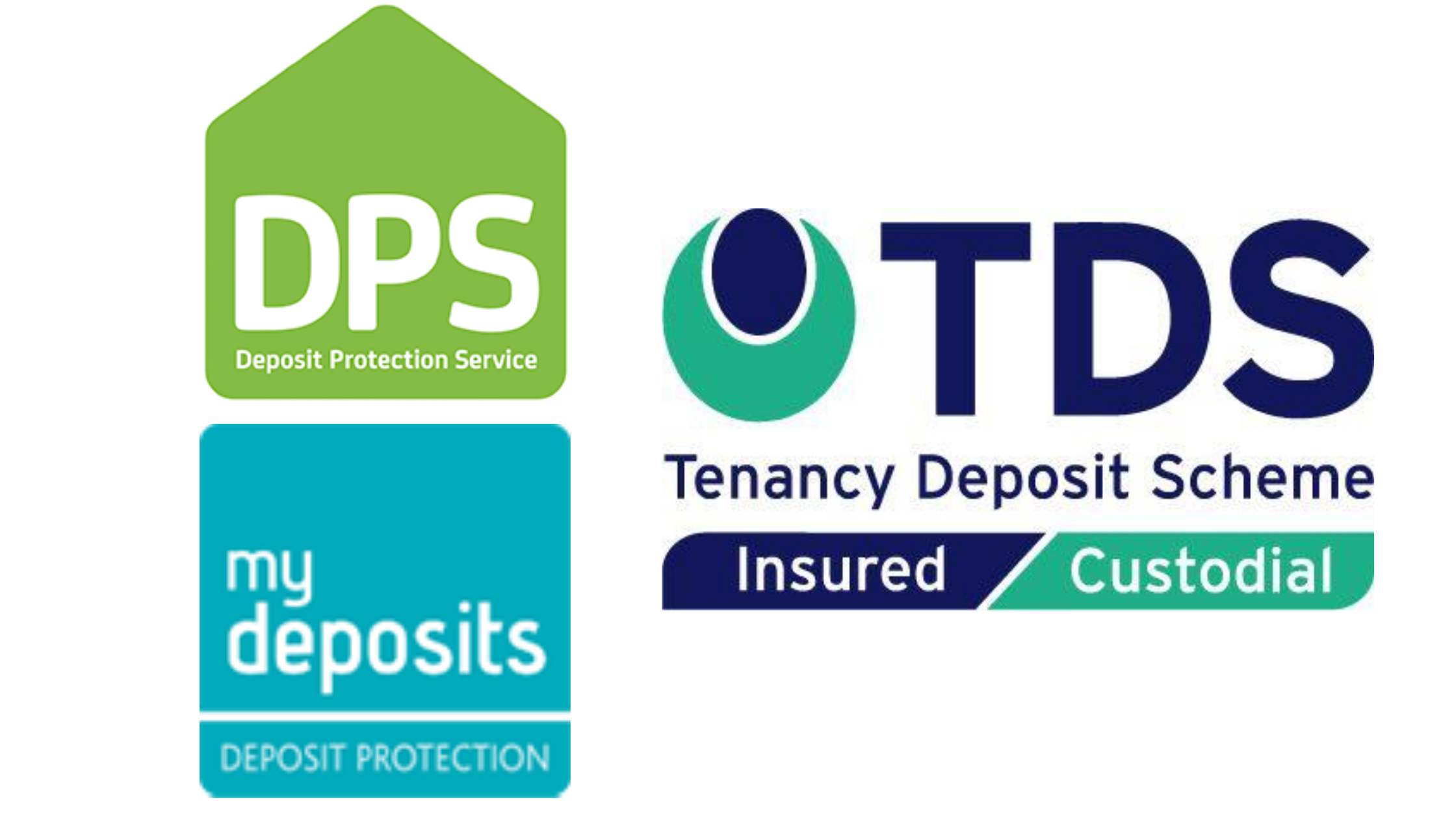Tenancy deposits: a guide for landlords
There are strict rules dictating the correct procedure for handling tenancy deposits and the penalties for non-compliance are significant. Our Operations team has put together this handy FAQs guide to help landlords understand their legal obligations and matters of best practice when it comes to holding and releasing deposits.
What are the landlord’s legal obligations when it comes to deposit handling?
All deposits held against an assured shorthold tenancy must be registered with one of the three government-backed deposit schemes. The deposit must be registered and paid to the scheme within 30 days following receipt of the funds from the renter, and tenants must be provided with the prescribed information and the relevant deposit scheme leaflet according to the same deadline.
The prescribed information is a document which includes specific details pertaining to the tenancy:
- The address of the property.
- The total amount of the deposit.
- The names and contact details of all tenants.
- The name of the lead tenant (the person nominated to liaise on behalf of all tenants pertaining to matters related to the deposit).
- The name, address, and contact details of the scheme protecting the deposit.
- The name, address, and contact details of the landlord.
- The details of any relevant third parties who have contributed to the deposit.
As of June 2019, the Tenant Fee Act introduced a cap on deposits of 5 weeks’ rent on properties where the annual rent is less than £50,000 and 6 weeks’ rent where the annual charge exceeds £50,000.
There are serious consequences for landlords who neglect their legal obligations regarding the deposit:
- A court may order the landlord to pay renters up to three times the amount of the total deposit. Renters can pursue a claim for improper deposit handling up to 6 years after the end of the tenancy (as per the statute of limitations).
- It will not be possible to serve a Section 21 eviction notice until any court-ordered fines have been paid in full.
If a landlord fails to provide renters with the required documentation, the potential fines are the same as if the deposit were never registered at all. For this reason, it is important to ensure that you retain evidence that the correct documents were served to your tenants within the deadline. Most schemes have a downloadable template that landlords can issue to renters for their signature.
The onus for registering the deposit falls on the landlord, but the task is commonly delegated to the agent instructed to act on the landlord’s behalf (particularly if the agent manages the property). Check your terms of business to see where the responsibility lies and ask your agent for confirmation that the deposit has been registered after the start of the tenancy if they don’t send you the prescribed information in a timely manner.
The deposit must be returned to the renters within 10 days once everyone agrees on the amount to be returned.
What are the deposit protection schemes?

There are three government-backed protection schemes: TDS (Tenancy Deposit Scheme), MyDeposits, and DPS (Deposit Protection Service). Each scheme is open to any landlord or agent and is governed by the same legislation.
Each provider offers two types of protection scheme - custodial or insured.
Custodial schemes:
In a custodial protection scheme the deposit is paid directly to the government-backed service and they hold the funds for the duration of the tenancy. At the end of the tenancy, either the landlord or the lead tenant can initiate repayment of the deposit using the scheme’s online portal. The deposit will be released (minus any deductions) only when both parties have confirmed that they agree on the total amount to be released to the renters.
If there is a dispute over proposed deposit deductions, the scheme will release the undisputed amount back to the renters and retain the contested funds while the matter is referred to their dispute resolution service. The landlord and renters are then required to submit evidence in support of their claim and counter-claim to be reviewed by an independent adjudicator. Though both parties are required to submit evidence, the onus is ultimately on the landlord to justify their claims with adequate documentary evidence.
Custodial schemes are free to use as the service is funded by the interest that accumulates on the money held by the scheme.
Insured schemes:
In an insured protection scheme, the landlord (or agent) holds the deposit in their own bank account and pays a small premium to the deposit protection provider to register the funds. Insured schemes are favoured by some agents and landlords with large portfolios and/or high-value properties as the deposit accrues interest while it sits in the account for the duration of the tenancy.
As the money is already in the landlord’s account, they can liaise with the renters at the end of the tenancy without directly involving the scheme provided both parties are in agreement on the amount to be returned. However, if there is a dispute over the proposed amount to be deducted from the deposit then the landlord must pay the contested sum to the scheme and refer the matter to the dispute resolution service. An independent adjudicator will then review the case just as they would if the deposit were held in a custodial scheme.
Though the renters cannot initiate the return of a deposit via an online portal as they would in a custodial scheme, they can write to the landlord to formally request the return of the deposit. The landlord has 10 days to reply to this written request, after which the deposit should either be released or both parties should enter into negotiations regarding the amount to be deducted.
If you’re a relatively inexperienced landlord and/or you own 1-2 properties, a custodial scheme is likely to be the better option for you. The process is much more straightforward, the service is free to use, and the administration involved in litigating a dispute is much easier with the online portals on offer with custodial schemes. If you own a large portfolio or let properties with high monthly rental value, the value of the interest you are likely to accrue by keeping the deposit in your own account may justify the scheme’s subscription fee. Do your research and decided which option best suits your portfolio and approach to property management.
What can landlords claim for?
Landlords can make a claim against the deposit for the following:
- Rent arrears and unpaid utility bills.
- Broken, damaged, or missing items from the inventory list.
- Damage to the property.
- Cleaning.
- Disposal of abandoned items.
Landlords cannot make a claim against the deposit for any deterioration in the condition of the property or its contents where this is the result of fair wear and tear. There is no clear definition of fair wear and tear, so this is often a matter of negotiation grounded in common sense. For example, cigarette burns on the furniture would clearly be a case of renter negligence and thus the landlord could claim damages from the deposit. However, discolouration and fraying of the upholstery on the furniture is an inevitable consequence of regular everyday use. It would be unlikely that any dispute resolution service would sustain a claim for damages on this basis.
Under no circumstances should claims against the deposit be made for the betterment of the property. If the property requires any general maintenance or freshening up at the end of a long tenancy, this is the landlord’s responsibility. The one exception to this rule would be where key facilities (for which the landlord is responsible) have deteriorated and the remedial work required is more extensive and expensive due to the failure of renters to monitor and report any issues in a timely manner.
How do landlords release a deposit and request deductions?
If the deposit is registered with a custodial scheme, landlords can request the release of the deposit minus deductions through the online portal. The scheme will ask for the amount to be returned to the renters and how much (if any) deposit the landlord wishes to withhold for damages or arrears. A breakdown of costs is required to justify the deduction. For example:
Rent arrears: £150
Cleaning: £150
Damages: £200
Total claim: £500
It is important to calculate the costs of any remedial works before requesting the release of the deposit. Landlords also need to be prepared to justify the costs of any works for which compensation is claimed with invoices, receipts or quotes from contractors.
It is essential to discuss proposed deductions with outgoing tenants before raising a claim. The protection scheme expects all parties to have discussed and negotiated deductions before escalating a dispute to the adjudicator. It is also difficult to claim back total costs for works such as additional cleaning if the scope of the job hasn’t been agreed with the renters before works were completed.
After the landlord has initiated the release of the deposit, the scheme will notify the renters and ask if they agree to any proposed deductions. If they consent to the deductions, the funds will be released by the scheme (normally within 5 working days but this will vary). If the tenants do not consent, they will be invited to offer a counter proposal for the landlord’s review. This is why it is best practice for both parties to negotiate prior to submitting a claim.
Once a claim has been raised the other party will have a deadline by which they must respond (this varies between schemes). If one party fails to respond, the other can claim back the requested funds using a statutory declaration. This form needs to be completed and witnessed by a solicitor. If the other party still doesn’t respond to the statutory declaration, then the claimant will be awarded the requested funds.
If the deposit is registered in an insured scheme then the landlord can negotiate directly with the tenants to agree the amount to be returned and release the deposit once all parties are in agreement. If the landlord is seeking to make deductions from the deposit, they will still need to provide a breakdown of costs and documentary evidence justifying the reason for the amount being claimed.
Regardless of the type of protection scheme the deposit should never be released before the end of the tenancy. If there is a dispute over the amount to be withheld and this cannot be resolved through negotiation, the matter is referred to the protection scheme’s ADR (alternative dispute resolution) service.
What happens if there is a dispute?
Firstly, it is worth mentioning that very few tenancy deposits end up with the dispute resolution service. Across all three schemes, between 0.82% to 0.92% of registered deposits are the subject of a dispute that ends up escalated to an adjudicator. Landlords and renters alike therefore should not be too concerned, as the overwhelming likelihood is that the deposit release will proceed amicably at the end of the tenancy.
As mentioned above, if there is a dispute over the deposit then the matter is referred to the deposit protection scheme’s dispute resolution service. An independent adjudicator will review the evidence submitted by each party and reject or uphold the landlord’s claim accordingly. Documents submitted as evidence typically include the check-in and check-out inventory reports, invoices for work carried out, and any written correspondence between the landlord and renters.
In the overwhelming majority of cases, the adjudicator will not rule in favour of the landlord without comprehensive inventory reports. This is because the deposit is used primarily to recover expenses incurred when restoring the property to its pre-tenancy condition. Without inventory reports from the beginning and end of the tenancy, it is difficult to measure how the condition of the property has changed over time. In the absence of firm evidence, the dispute resolution service will normally reject the landlord’s claim and return funds to the tenant.
Our article on the process of ending a tenancy offers tips and further information on negotiating the release of a deposit with your renters.
Is there an alternative to the deposit backed schemes?
Yes - some landlords and agents are choosing to offer tenants the option of using a deposit replacement scheme. These services are an insurance policy that indemnifies the landlord against any breaches of the tenancy agreement. The tenant pays a non-refundable fee to the service provider instead of a traditional tenancy deposit of 5 or 6 weeks’ rent, and the landlord is offered equivalent (or in some cases greater) protection by the scheme. It will pay out to cover any damages or rent arrears at the end of the tenancy according to a process similar to that used by the government-backed schemes, and disputes will also be reviewed by an independent adjudicator.
Deposit replacement schemes are a relatively new service, but they are popular with some tenants as they significantly reduce the upfront costs associated with moving into a new property. They are also attractive to some landlords as many replacement schemes aim to reduce the time taken to pay out on a claim and often offer greater financial protection against damages and arrears than capped tenancy deposits.
Deposit replacement schemes are a relatively new product and it is too soon to tell whether or not they are likely to become the new norm. Traditional deposits remain the preferred option for the overwhelming majority of landlords and renters, and there are some significant caveats to bear in mind for deposit replacement service users. For example, all tenant fees are non-refundable and in most cases the cumulative cost will be significantly higher than the amount a renter would lose with a traditional deposit.
For this and many other reasons, landlords and agents must always offer all renters the option of a traditional deposit protected with a government-backed scheme instead of a deposit replacement scheme.
Here at Home Made, we register all deposits with the TDS custodial scheme free of charge and ensure that every renter is provided with the required paperwork unless the landlord instructs us otherwise.
At Home Made, we offer a hybrid lettings solution that adds value at every stage of the rental process. With our game-changing new landlord platform, The Property Wallet, we offer London landlords exceptional tenant-find and property management services for a low monthly fee.
- Avoid expensive upfront fees and spread the cost of marketing your property with the option to pay monthly.
- Free rent collection and arrears chasing.
- Sign off and see all charges and payments in your dashboard.
- Real-time updates on marketing, viewings, and offers.
Prices start from just £50+VAT/mo for tenant-find and £60+VAT/mo for management. Alternatively, you can pay a one-off upfront fee of £1,200+VAT for our tenant-find service.
If you would like to speak with us about your property needs, contact us via our website to find out how we can help. If you're ready to get started, book your free valuation here.
Book valuationCheck out more of our landlord advice here and follow us on Twitter, Linkedin, and Instagram for regular updates on industry compliance standards, market insights, and Home Made company news.




